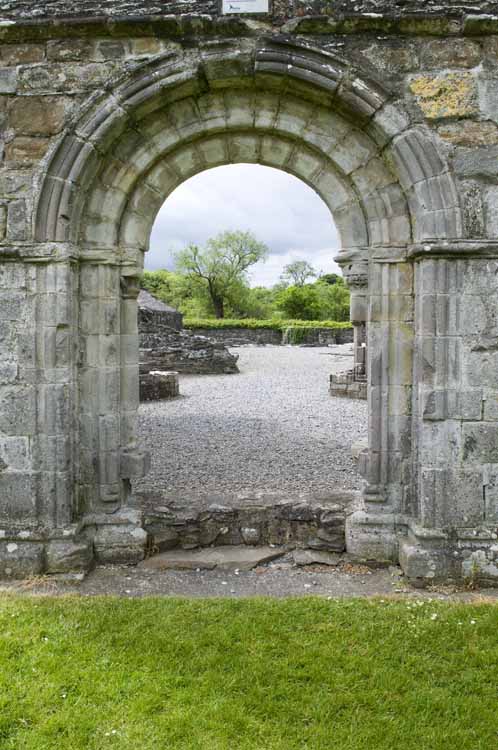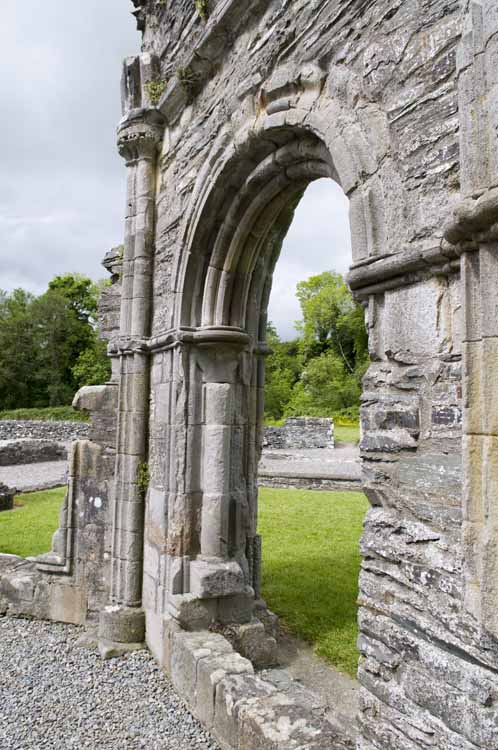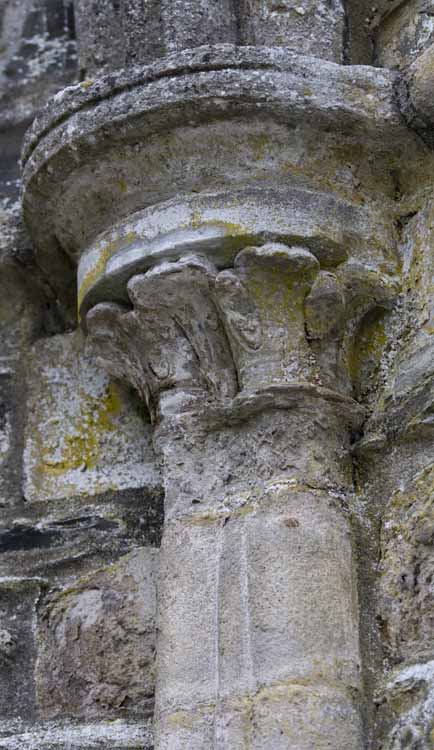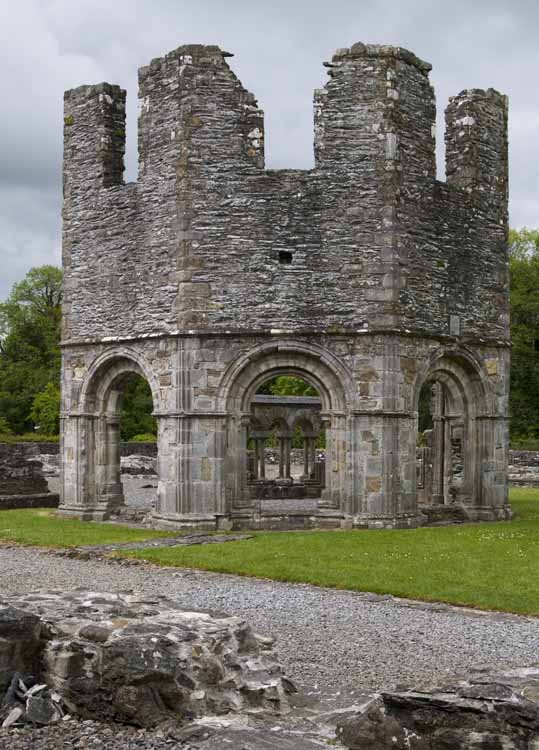
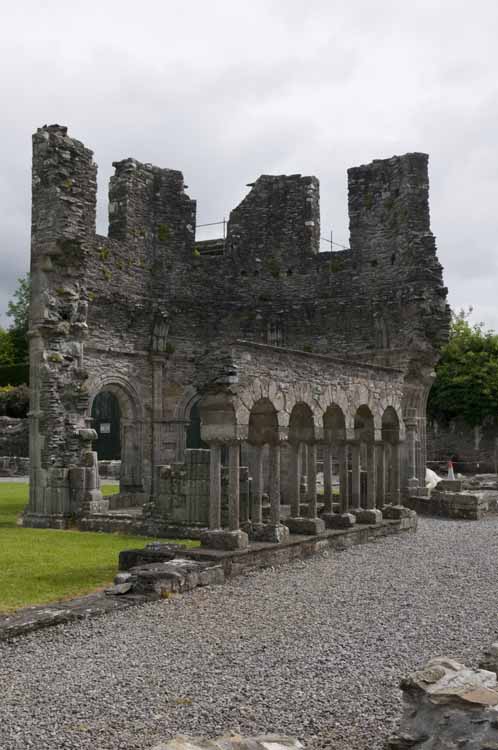
One of the curious features of Mellifont is that the Romanesque lavabo, which dates to the 13th century, managed to survive for over four hundred years following the dissolution, when most of the other buildings of the abbey were destroyed (Stalley, 1996). When the monastery was dissolved on 23 July 1539, the buildings and lands passed into secular ownership; they were initially leased by Laurence Townley, but by 1566 Mellifont was in the hands of Edward Moore, an Englishman from Kent. He apparently built a fortified mansion, with a cobbled courtyard on the site of the cloister garth. In 1727 one of his descendants, the fifth earl of Drogheda, sold Mellifont to the Balfours of Townley Hall and the 'mansion' was subsequently abandoned. Until 1727, therefore, the site of the abbey was occupied as a private residence, described in the later years of the seventeenth century as 'a large but not very decayed house'. Evidence found in the excavations of 1954-5 suggested that the nucleus of the building lay in the south range, in the area of the monastic refectory. What was the function of the lavabo at this time? With its well-moulded arches, it would have formed an attractive feature of the courtyard and Liam de Paor has suggested that it might have served as a porch. There is little doubt that it was in corporated in some way into the Moore House. Medieval lavabos were usually single storey buildings and the upper floor at Mellifont, with its broad, classically proportioned windows and brick infills, appears to represent a 16th or 17th century addition or remodelling. The existence of the water system might explain why the Moores decided to retain the lavabo as part of their house, though the water basins must have been an encumbrance in the porch.
The excavations that took place at Mellifont in 1954-5 produced some additional information about the monastic water supply. It was at this time that sections of lead piping were found running across the cloister, with a branch leading towards the chapter house.42 This could have represented the main supply to the lavabo or to the monastic cistern, with water being taken from the River Mattock some distance to the north. However, this would have been an unusual arrangement, particularly since the pipe must have run under the church. It is difficult to believe that this was part of the hydraulic scheme of c. 1210. The floor of the lavabo appears to have been cleared during the excavations, but no discoveries were recorded in this area.
Cistercian Abbey of Mellifont, County Louth, Ireland.
